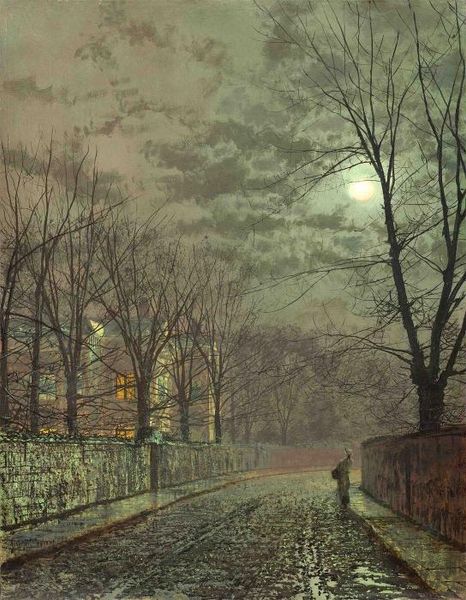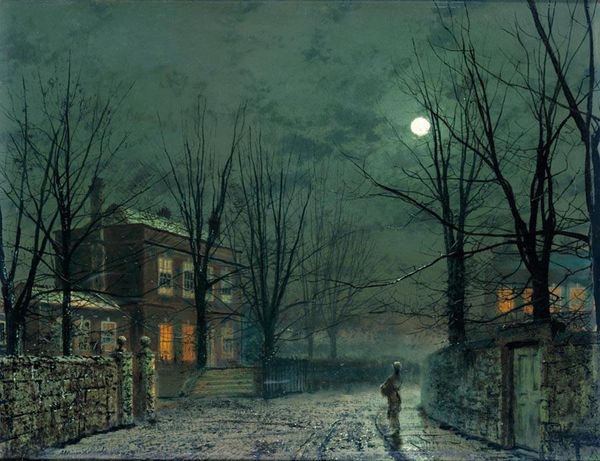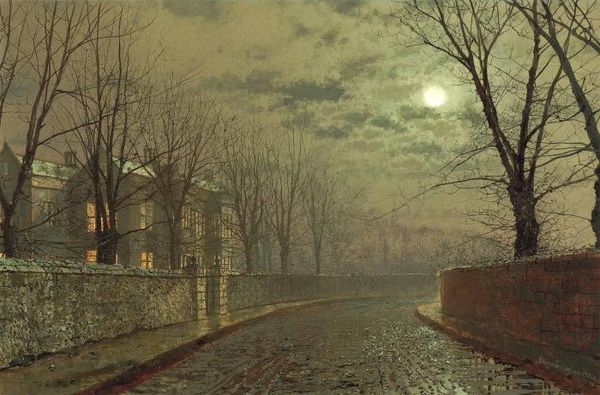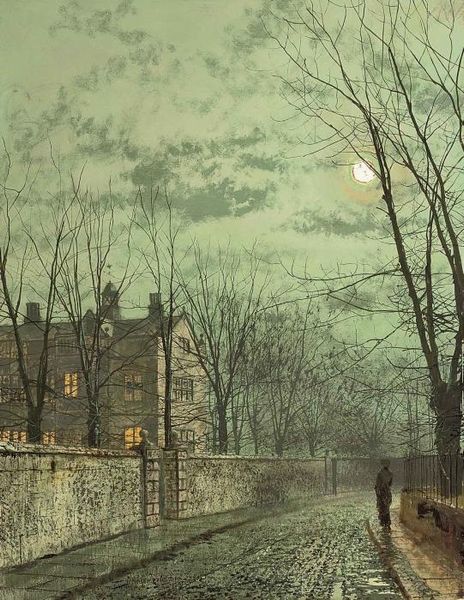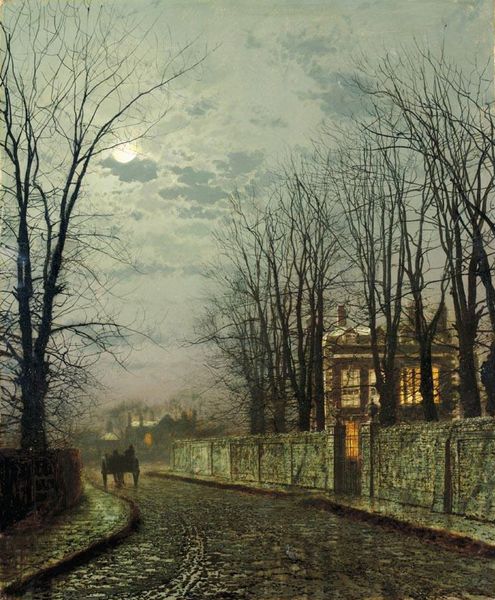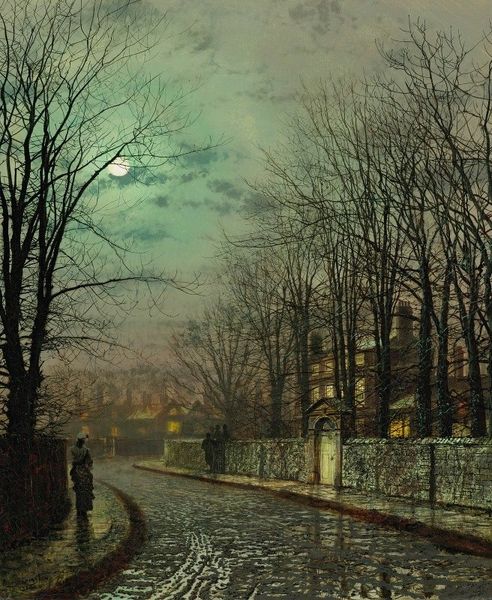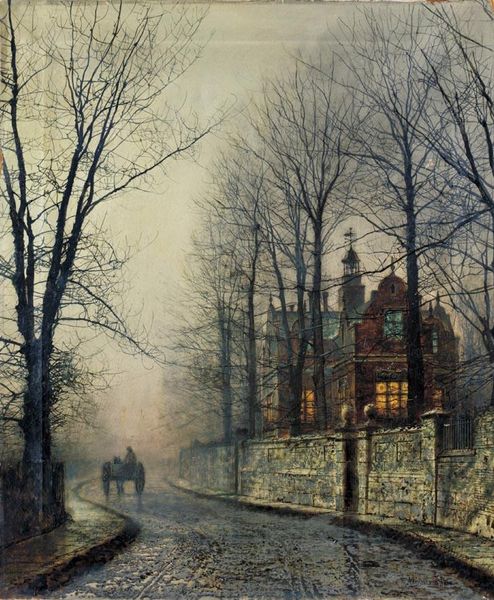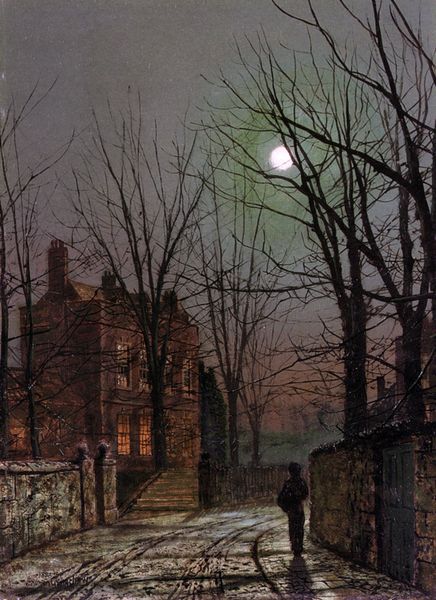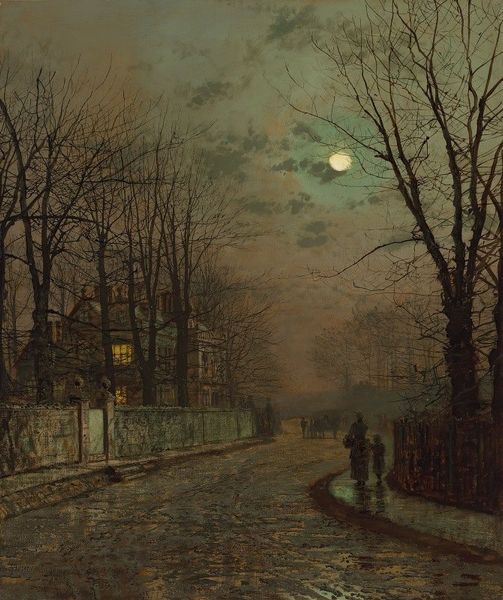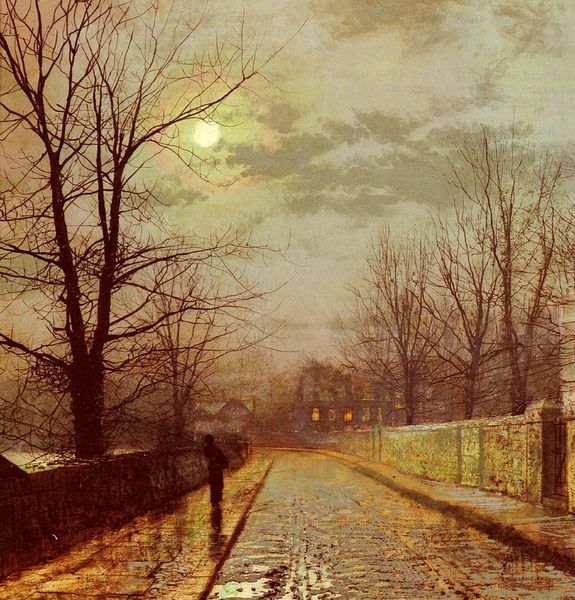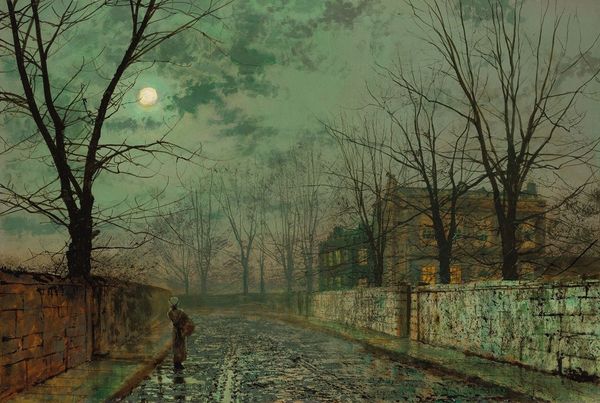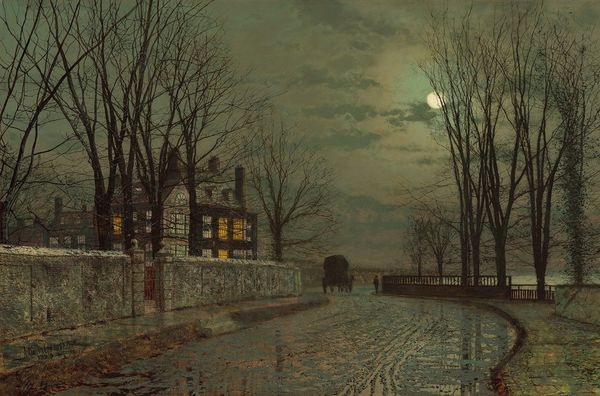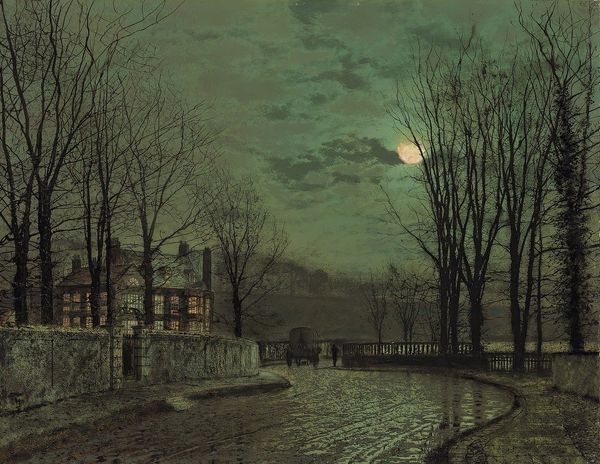
plein-air, oil-paint
#
night
#
tree
#
sky
#
cityscape
#
plein-air
#
oil-paint
#
urban cityscape
#
road
#
romanticism
#
square
#
fog
#
men
#
cityscape
#
street
#
nature
#
watercolor
#
mist
Copyright: Public domain
Curator: Here we have "The Trysting Tree" by John Atkinson Grimshaw. The work, likely painted en plein air, depicts a nighttime urban cityscape. What's your immediate take on this scene? Editor: It's undeniably atmospheric. There's a haunting, almost melancholic mood established through the muted color palette and the skeletal trees reaching towards the moonlit sky. It whispers of secrets and hidden encounters, wouldn't you agree? Curator: Absolutely. Grimshaw's cityscapes, and this one is a strong example, frequently tap into the Victorian fascination with the sublime found in the ordinary. The industrial revolution created new forms of urban alienation. These streets are not just thoroughfares, they become spaces where social and class dynamics play out. Think about how gaslight transformed nocturnal urban spaces for the Victorian era and consider that in light of romanticism's views about the common man and common life. Editor: That's an interesting point, regarding class and gender performances in urban life at that historical juncture, because although these gas-lit streets promised a new accessibility to all, what was considered a safe night-time behavior became distinctly gendered. Consider also that in spite of some interpretations of it as pre-impressionistic, this romantic portrayal also draws the viewer into a highly class-defined perspective of the female body. Curator: The "trysting tree" becomes, in essence, a silent witness to these exchanges, this particular dance between desire, social constraint, and, quite frankly, capital. We could easily position it within a larger conversation about gendered spaces in the 19th century, about visibility and power within expanding cities. Editor: Yes, its placement near the city’s edge subtly reveals what the establishment tends to sweep under the rug: moral transgressions that can take place anywhere, as easily behind high gated walls as along desolate streets. The moon casts a peculiar light, like the eye of judgment overlooking surreptitious dealings. It's less a celebration of romance and more an eerie staging of clandestine meetings. Grimshaw uses shadow and light, the tangible and the barely visible, to weave his intricate, moral commentary about British Victorian society. Curator: Indeed. The more we engage with Grimshaw, the more these streets come to represent so much more than cobblestone and moonlight. Editor: A chilling tale about what it meant to exist and navigate those new boundaries then. Thank you for sharing your insights.
Comments
No comments
Be the first to comment and join the conversation on the ultimate creative platform.
